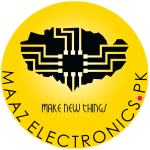PELTIER & WATER BLOCKS Leave a comment
PILTIER & WATER BLOCKS
Peltier device also called or thermoelectric cooler (TEC) or solid refrigerator. The main application is cooling but It can used either for cooling and heating. The effect creates a temperature difference by transferring heat between two electrical joints. A voltage is applied across terminals conductors to create an electric current. When the current flows through the joints of the two conductors, heat is removed at one joint and cooling occurs then the heat is deposited at the other junction. DC voltage is required, in every case. Water Blocks are usually used for cooling solution for TECs, TEGs, IGBTs, thyristors, SiC, data centers, EV/HEV, alternate energy, battery systems, and anything that needs a dense highly efficient means of heat removal. The base area can be cooled and is usually manufactured from metals with high thermal conductivity such as copper or aluminum. The “top” ensures the water is contained safely inside the water block and has connections that allow hosing to connect it with the water cooling loop and top can also have the same material like base which is metal
PELTIER
The elements of Peltier are commonly used in consumer products. The example of Peltier is they are used in camping, portable coolers, cooling electronic components and small instruments. It can also be used to extract water from the air in dehumidifiers. The function of Peltier cooler, heater and thermoelectric heat pump which transfers heat from one end of the device to the other, with consumption of electrical energy, depending on the direction of the current.
THERMOELECTRIC COOLER
Thermoelectric coolers from II-IV Marlow works like a solid-state heat pump. The cooling of consequence any unit using thermoelectric coolers is proportional to the number of coolers used. Commonly various thermoelectric coolers are associated next to each other and afterward set between two metal plates. II-VI Marlow highlights three distinct kinds of thermoelectric coolers including: Thermocyclers, Single Stage, and Multi-Stage.
HEAT ABSORPTION
when a current pass through one or more pairs of elements from n- to p-type Cooling will occurs; there is a decrease in temperature at the junction (cold side), resulting in the absorption of heat from the environment. The heat is due to the elements by electron transport and released on the opposite (“hot”) side as the electrons move from a high- to low-energy state.
WATER BLOCKS
Water blocks (cold plates) are the most effective method of heat removal. They are more efficient compared to a standard air-cooled heat sink and fan the principle of water block is: you provide a source of cool liquid (typically water, or ethylene glycol/water) to the inlet of the water block. The liquid travels back and forth through the different chambers of the water block so in this way absorbing the heat from the TECs or electronics. The warmer liquid then exits the water block.

